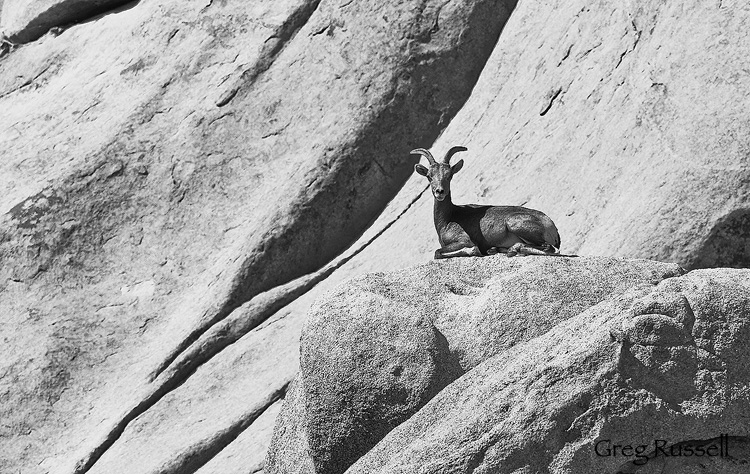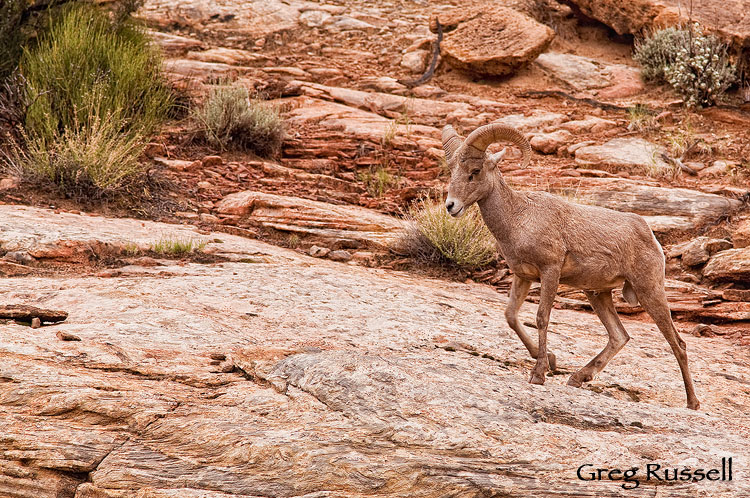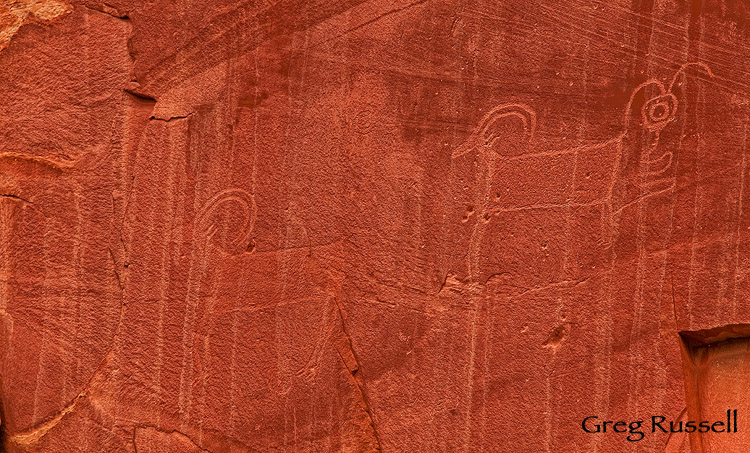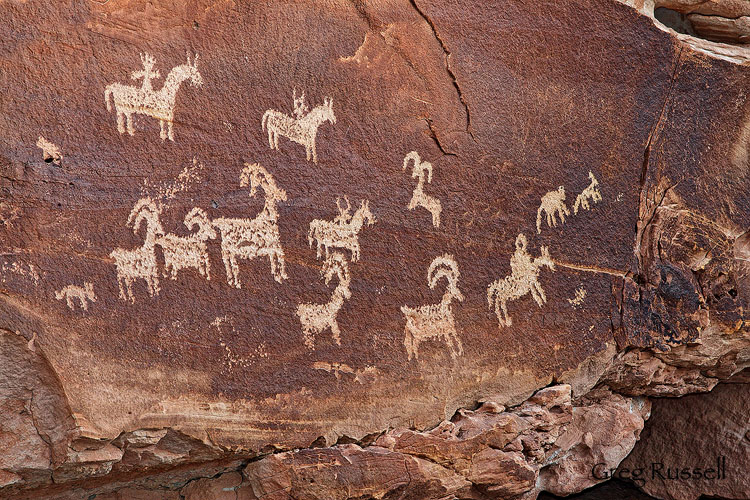In the deserts and canyons of the southwest, water can be tough to come by; as a result, charismatic megafauna that rely on that water are often elusive and secretive. The desert bighorn sheep (Ovis canadensis nelsoni) is a widespread, but uncommon resident of the southwest.
They truly are sentinels of the desert; on any given afternoon in Joshua Tree National Park, you might see one surveying the landscape from atop a granite boulder. In southwest Utah, they return to the canyons from the high country when the temperature starts to fall. In the desert communities around Palm Springs, they illustrate the interaction between man and nature very well; bighorns have taken to eating ornamental cactus and other plants, so large fences have been erected to keep them out (which is ironic, because some people would pay to see a sheep!).

- Desert Sentinel

The interaction between humans and bighorns isn’t a recent thing, though. In fact, humans have been interacting with them since the southwest was first settled, probably thousands of years ago. If you take any interest in rock art at all, you’ll quickly find that bighorns were a ubiquitous subject of prehistoric artists. Indeed, I wonder if the Ancestral Puebloan and Fremont peoples who lived with these animals found them just as captivating as we do today.
In some ways, the desert bighorn sheep embodies the spirit of the west: it is largely solitary, is resilient, and has shown a great ability to adapt to the desert environment. Its a true steward of the ecosystems it thrives in. The Desert Bighorn Council is a great resource to learn more about the biology and conservation of desert bighorn sheep (they list links to many local organizations as well).



Awesome, Greg, I’ve never seen one and would love to. I enjoyed this a great deal.
In the last shot, are those people on horses herding the sheep?
Sharon
Hi, Sharon. If you ever make it to the Southwest, let me know; I know of a few places they’re pretty easy to find…
Regarding the petroglyphs…I’m not sure to be honest. Clearly, riders and sheep appear in such a manner that it looks that way, doesn’t it? This petroglyph is found in Arches National Park (its fairly famous–the Wolfe Ranch Petroglyphs) and is much younger than others I’ve featured on this blog before. Its Ute, and is probably from sometime in the 1700s. I don’t think they ever herded the sheep, but maybe they were just fantasizing about it! 🙂
Very interesting post and captivating images. I enjoy your storytelling, Greg.
Thanks, David!! The sentiment is mutual…
Very interesting indeed. I’ve hung out with the bighorns in the northern Rockies, but I’m not familiar with the desert sheep. They must be one tough beast. The mountain sheep have some pretty easy living compared to the conditions in the desert.
No kidding, PJ! The biggest environmental differences probably are very hot temperatures (cold, too, but the mountain sheep face that), and dry weather. These increased demands surely place extra burden on the animal, and with a lower quality diet (I assume), they have trouble facing the demands.
Yeah, one tough beast indeed…
Hi Greg.
Very nice and thoughtful posting. Aside from the excellent images always, I enjoy the knowledge of your environs, both natural and historical, that you share with us.
I remember the first image…it’s one I’ve enjoyed before and is a favorite of mine.
Thanks, Steve, I appreciate it!
How’s that piggy bank filling up for your trip out west? 🙂
$3.75 so far. 🙂
I’m thinking next summer.
Right on. 🙂
Excellent post as others have said. I especially like the B&W image top and the close-up of the petroglyphs.
Thanks, Andrew! I appreciate it. The monochrome image is one of my favorites…I like the simplicity of it.
What an excellent combination of old and new! Love it. Great comparison and context.
Thanks, Derrick!! I appreciate it and I’m glad you appreciated the old-new dichotomy. 🙂